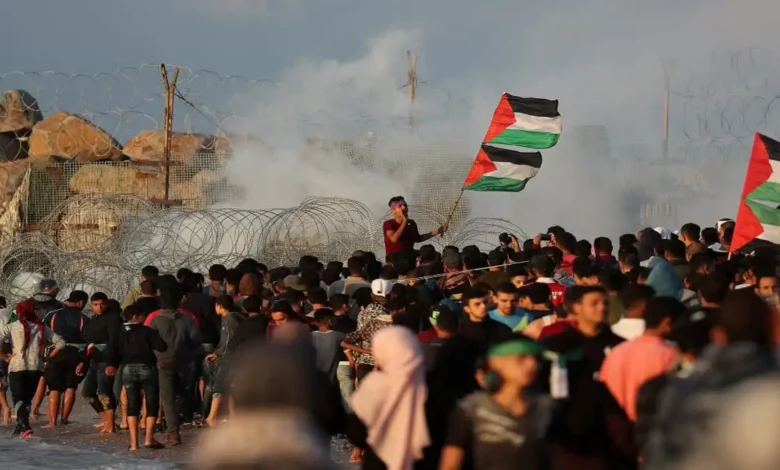Ceasefire Gaza: Understanding the Quest for Peace in a Region of Conflict

Introduction: The Significance of a ceasefire Gaza
The term “ceasefire Gaza” often resonates with hope and urgency as it represents a pause in violence within one of the most contentious regions in the world. The Gaza Strip, a small piece of land along the Mediterranean coast, has been at the center of decades-long conflict, drawing attention from global leaders, activists, and everyday citizens. Achieving a ceasefire in Gaza is not just about halting hostilities temporarily; it’s about paving the way for lasting peace in a region marred by historical grievances and ongoing tensions.
This article explores the complexities surrounding ceasefire Gaza, delving into their historical context, the challenges in implementing them, and their implications for the people and the broader Middle East. By understanding the nuances of this delicate issue, we can better appreciate the efforts required to bring about meaningful change.
Historical Context: The Roots of the Gaza Conflict
The Gaza conflict is deeply rooted in the broader Israeli-Palestinian conflict, a struggle that dates back to the early twentieth century. This conflict stems from competing nationalist movements, territorial disputes, and the aftermath of colonialism. The establishment of Israel in the mid-twentieth century and the subsequent displacement of Palestinian populations further entrenched the divide.
The Gaza Strip, in particular, has been a flashpoint of this conflict. After the 1967 war, Israel took control of Gaza, leading to years of military presence and settlement activity. Although Israel withdrew its settlements in the early 2000s, the region remained under blockade, with severe restrictions on movement and trade. This historical backdrop underscores the challenges of achieving a lasting ceasefire in Gaza, as the conflict is not just military but also deeply political and humanitarian.
Ceasefire Agreements: Patterns and Pitfalls
Ceasefire agreements in Gaza have historically followed periods of intense conflict. Often brokered by international mediators such as Egypt, Qatar, or the United Nations, these agreements aim to stop hostilities and create a window for dialogue. However, they are frequently short-lived, as underlying issues remain unresolved.
One of the recurring pitfalls of ceasefire Gaza is the lack of trust between the parties involved. Both Israel and Hamas, the governing authority in Gaza, often accuse each other of violating agreements. Additionally, external pressures and political dynamics further complicate the situation, making it difficult to sustain peace. Understanding these patterns highlights the need for more comprehensive and inclusive approaches to ceasefire negotiations.
Humanitarian Impacts of Ceasefires
For the people living in Gaza, ceasefires are a reprieve from the horrors of war. The region’s densely populated areas mean that civilian casualties are a tragic reality of the conflict. Ceasefires provide a much-needed pause, allowing families to rebuild their lives, access essential services, and begin the healing process.
However, the humanitarian impact of ceasefires extends beyond immediate relief. They also offer an opportunity for international aid organizations to deliver much-needed assistance, from food and medical supplies to infrastructure repair. The humanitarian angle underscores the urgency of ceasefires, as the well-being of millions depends on even the briefest cessation of violence.
Challenges in Sustaining Ceasefires

Sustaining a ceasefire in ceasefire Gaza is fraught with challenges. One of the most significant obstacles is the asymmetry between the conflicting parties. Israel, with its advanced military capabilities, and Hamas, operating as both a political and militant organization, have fundamentally different goals and resources. This imbalance often leads to disagreements on the terms of ceasefires, with both sides feeling that their security or sovereignty is compromised.
Another challenge lies in addressing the root causes of the conflict. Ceasefires often focus on stopping immediate violence but fail to tackle issues such as the blockade on Gaza, the status of Jerusalem, and the broader Israeli-Palestinian dispute. Without addressing these fundamental problems, ceasefires remain fragile and susceptible to collapse.
The Role of International Mediation
International mediation plays a critical role in achieving and maintaining ceasefire Gaza. Countries like Egypt and Qatar have historically acted as intermediaries, leveraging their relationships with both Israel and Hamas to facilitate dialogue. The United Nations and other global organizations also play a vital role, providing platforms for negotiation and monitoring ceasefire agreements.
Despite these efforts, international mediation is not without its limitations. The lack of a unified global stance on the Israeli-Palestinian conflict often weakens the effectiveness of these initiatives. Moreover, geopolitical interests sometimes overshadow genuine efforts to achieve peace, further complicating the path to a sustainable ceasefire.
The Psychological Toll of the Conflict
The psychological toll of the ceasefire Gaza conflict on its residents cannot be overstated. Years of violence, displacement, and uncertainty have left deep scars on the population. Ceasefires, while offering temporary relief, do little to address the long-term mental health challenges faced by those living in the region.
Children, in particular, bear the brunt of this trauma. Growing up in an environment of fear and instability affects their development and prospects. Addressing the psychological impact of the conflict is a crucial component of any long-term peace strategy, emphasizing the need for ceasefires to evolve into comprehensive peacebuilding efforts.
The Global Perspective: Why ceasefire Gaza Matter
The significance of ceasefire Gaza extends far beyond the region. The Israeli-Palestinian conflict is a focal point of global politics, influencing relations between nations and shaping public opinion worldwide. ceasefire Gaza often serve as a barometer of the broader peace process, reflecting the willingness of the parties involved to engage in dialogue and compromise.
Moreover, the humanitarian crisis in Gaza draws international attention, with ceasefires offering a chance to address the immediate needs of the population. The global perspective underscores the interconnectedness of the Gaza conflict with broader issues of human rights, international law, and global stability.
Pathways to Lasting Peace
While ceasefires are essential, they are only one step toward achieving lasting peace in Gaza. Addressing the root causes of the conflict requires a comprehensive approach that includes political solutions, economic development, and social reconciliation. Both local and international actors must work together to create an environment where ceasefires can evolve into enduring peace agreements.
Building trust between the parties is a crucial component of this process. Initiatives that promote dialogue, mutual understanding, and cooperation can help bridge the divide and lay the groundwork for a sustainable resolution. Ultimately, achieving peace in Gaza requires a collective effort that goes beyond temporary measures.
Conclusion: The Importance of Continued Efforts
The concept of “ceasefire Gaza” is both a symbol of hope and a reminder of the challenges that lie ahead. While ceasefires provide a temporary pause in violence, they also highlight the need for long-term solutions to the conflict. By addressing the root causes, fostering trust, and engaging in comprehensive peacebuilding efforts, it is possible to move closer to a future where ceasefires are no longer needed.
As the world continues to watch and engage with the ceasefire Gaza conflict, the importance of sustained efforts to achieve peace cannot be overstated. The path to resolution is undoubtedly complex, but it is a journey worth undertaking for the sake of the millions affected by the conflict and the broader pursuit of justice and stability.





